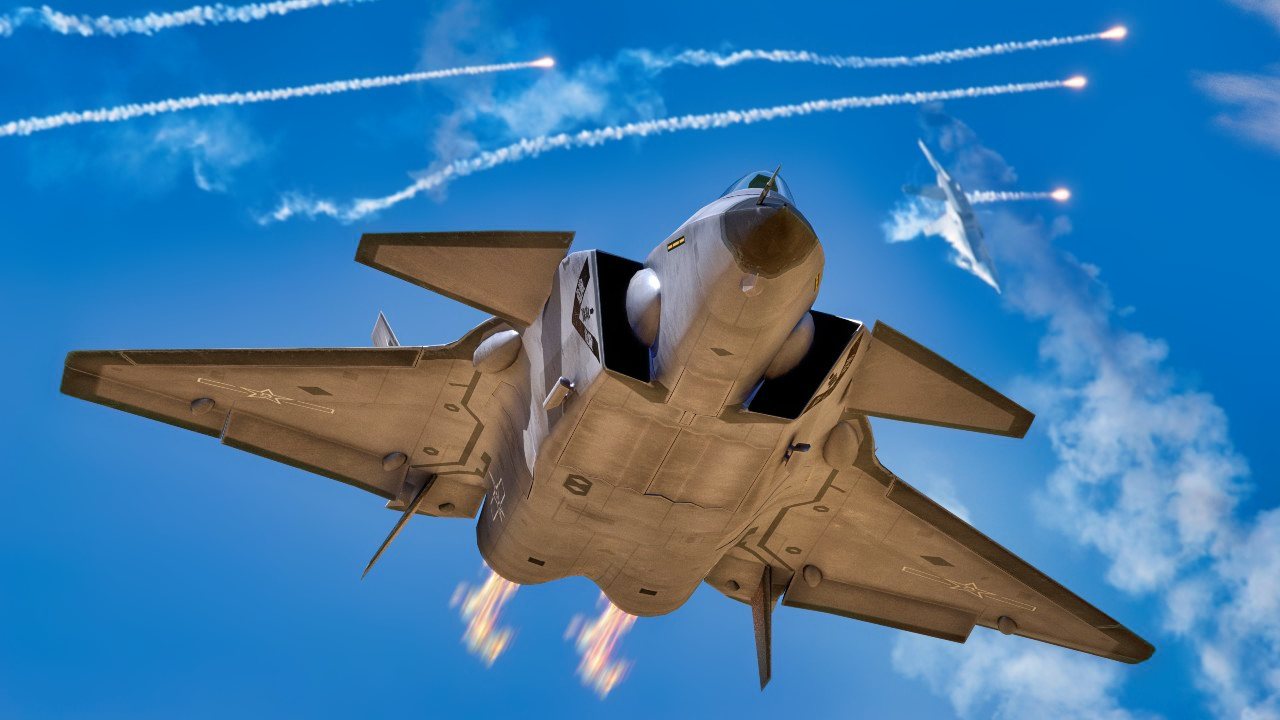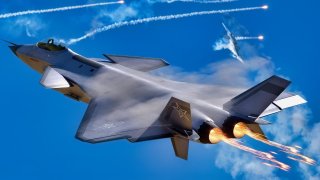China's J-20 Stealth Fighter Could Soon Be 'Flying' in the Middle East
The United Arab Emirates (UAE) is exploring potential procurement of Chengdu J-20 fighter jets from China, despite existing complications with the U.S. over F-35 sales.
Summary: The United Arab Emirates (UAE) is exploring potential procurement of Chengdu J-20 fighter jets from China, despite existing complications with the U.S. over F-35 sales.

-The J-20, China's indigenously built fifth-generation fighter, mirrors many design elements of the U.S. F-35 and F-22 but faces speculation regarding its actual capabilities.
-Although it can carry more ammunition and has a longer range, concerns about its engine reliability persist.
-China has restricted J-20 exports to maintain technological secrecy and avoid exposing any flaws.
Can the J-20 Rival the F-35? UAE Explores New Fighter Jet Options
The United Arab Emirates hopes its strengthening ties with China will lead to Abu Dhabi procuring Chengdu J-20 fighter jets. Although this will likely not come to pass, the commander of the UAE’s Joint Operations met with China’s People’s Liberation Army Air Force (PLAAF) officials last month to discuss future relations.

Things are getting complicated in the aerial realm for Abu Dhabi. The U.S. and the UAE had penned a deal in 2021 for F-35 Lightning II fighters, but this arrangement has yet to materialize, because Washington is worried about growing China-UAE relations. If Beijing reverses policy and approves J-20 sales to the UAE and other Middle Eastern countries, America’s dominance in supplying fighter jets could be disrupted.
Introducing the Chengdu J-20
Before China introduced its J-20, the U.S. had no competition for its two fifth-generation platforms, the F-22 Raptor and F-35 Lightning II. In an effort to break America’s monopoly on top-flight aerial technology, Beijing prioritized developing its own modern fighter. The PLAAF officially endorsed the J-20 Mighty Dragon in the early 2000s, and the fighter entered service in 2017. In 2020, Chinese state-run media revealed that a new J-20B variant was being produced, equipped with thrust vectoring controls. One year later, the South China Morning Post reported that the fifth-generation fighter’s Russian engines would soon be replaced with a domestically produced system.
Prior to the Mighty Dragon, China depended on Russia for military designs and components. China’s Shenyang J-11 and J-16 airframes are largely derived from the Su-27 fighter, which Beijing procured from the former Soviet Union in the late 1980s. According to speculation, China’s J-15 airframe is similarly based on a reverse-engineered Russian Su-33. U.S. officials have also pointed out that the Mighty Dragon looks a lot like the F-35. The aircraft’s fuselage shape, engine intake shape, exhaust nozzle shape, and even its paint design appear to mirror both the Lightning II and the Raptor.
While the Chengdu J-20’s exact specs remain a mystery, many U.S. analysts believe the F-35 is superior in most areas. The Mighty Dragon appears to have a larger radar cross section than its American counterpart, making it easier for enemy aircraft to detect. It is also believed that the Chinese WS-15 engine is at least a decade behind the engine that powers the Lightning II in terms of capability and reliability. In 2015, one of these Chinese engines exploded, indicating the engine blades may not be able to withstand the higher temperatures and maneuverability associated with a fifth-generation platform.

But the Lightning II does not necessarily top the Chinese fighter in every regard.
As explained by defense analyst Kris Osborn, “The J-20 can carry more ammunition than an F-35 on a single mission. In terms of weight, it can load up 27,998 pounds of weapons, compared to 18,000 pounds for an F-35.” The Chinese fighter can also reportedly fly farther without needing to refuel, an important characteristic that could come in handy when operating over the Pacific. Ultimately, the J-20 has yet to be combat-tested, so its exact capabilities cannot be confirmed.
Why Won’t China Sell the J-20?
In 2014, a former officer in Beijing’s strategic missile force first announced the country’s J-20 travel ban in an interview.
“The export of advanced Chinese military technology is prohibited,” Song Zhongping said. “This is in order to keep J-20’s fifth-generation technology out of hostile hands.”
The U.S. has followed a similar policy regarding its F-22, which arguably remains the most sophisticated jet of its kind.
While it would make sense for Beijing to limit the reach of its self-proclaimed top-of-the-line technology, perhaps the country is also fearful that if exported, the J-20’s flaws would be discovered, and the exaggeration of its capabilities would be revealed. In any case, Beijing will not likely shift its J-20 export policy anytime soon.
About the Author: Maya Carlin
Maya Carlin, National Security Writer with The National Interest, is an analyst with the Center for Security Policy and a former Anna Sobol Levy Fellow at IDC Herzliya in Israel. She has by-lines in many publications, including The National Interest, Jerusalem Post, and Times of Israel. You can follow her on Twitter: @MayaCarlin.
All images are Creative Commons.


